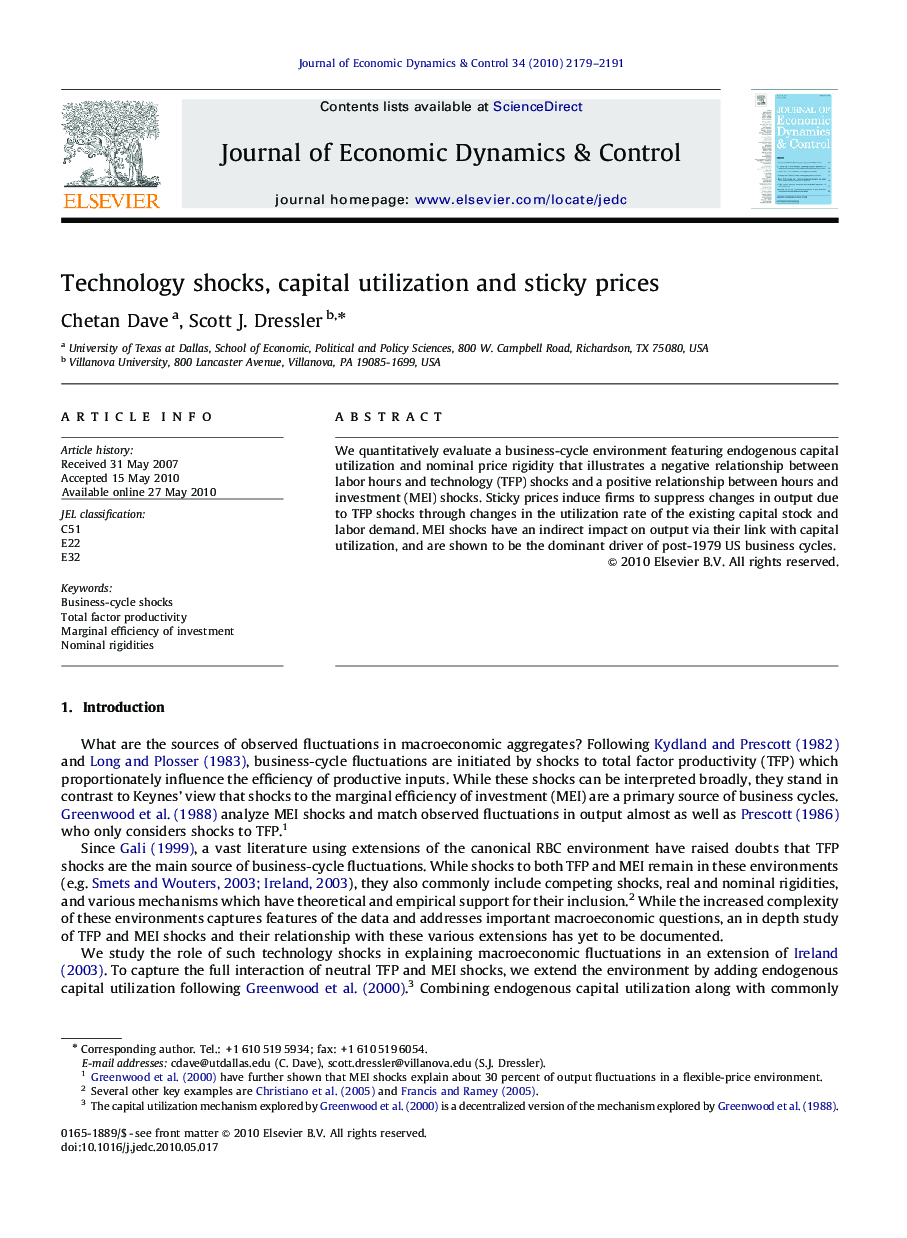| Article ID | Journal | Published Year | Pages | File Type |
|---|---|---|---|---|
| 5099679 | Journal of Economic Dynamics and Control | 2010 | 13 Pages |
Abstract
We quantitatively evaluate a business-cycle environment featuring endogenous capital utilization and nominal price rigidity that illustrates a negative relationship between labor hours and technology (TFP) shocks and a positive relationship between hours and investment (MEI) shocks. Sticky prices induce firms to suppress changes in output due to TFP shocks through changes in the utilization rate of the existing capital stock and labor demand. MEI shocks have an indirect impact on output via their link with capital utilization, and are shown to be the dominant driver of post-1979 US business cycles.
Related Topics
Physical Sciences and Engineering
Mathematics
Control and Optimization
Authors
Chetan Dave, Scott J. Dressler,
